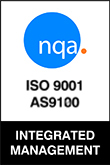Litz Wire Transformers and Inductors
Specifically designed to reduce skin effect and proximity effect losses, litz wire (LW) is used to carry alternating current (AC) in a wide range of electronics applications.
This is composed of many thin copper wire strands individually insulated and twisted or woven together in a specified pattern, which serves to ensure that the proportion of overall strand length at the exterior of the wire is distributed equally among each strand — which is impossible when using simple twisted-strand hookup wire.
Sizing is commonly expressed in the following abbreviated format: XX AWG N / YY, where XX represents equivalent wire gauge, N represents the number of strands within the wire, and YY represents the Wire Gauge (AWG) size of each strand.
Let Us Optimize Your High Frequency
Magnetics Design
Advantages of Litz Wire
Since its introduction in the late 1800s, LW has become an essential component in power electronics.

As mentioned earlier, this wire reduces skin effect losses, which occur when AC current distributes itself with greater density near the surface, or skin, of a conductor.
The uneven current density then increases resistance and causes higher losses.
It also helps to reduce proximity effect losses; in bundled wires carrying AC current, the proximity effect occurs when the current distributes itself in the point of a conductor farthest away from adjoining conductors, leading to higher resistance and losses.
This wire is unique in that it allows for low-resistance, high-current conductors to operate at very high frequencies — into the range of hundreds of kilohertz (kHz), which is hard to maintain if skin and proximity effects are taking place.
Versatile and reliable, this wire is well suited for a number of applications and is frequently used in inverters, relays, power supplies, and converters.
Let Us Optimize Your High Frequency
Magnetics Design
Working With Litz Wire
Although it offers many unique benefits, it can be challenging to achieve optimal efficiency, due in large part to the wide range of available configurations.
To simplify the selection process, several approaches and tools can be employed, such as the use of tables outlining recommended strand diameter by frequency.
To incorporate the wiring effectively and realize its benefits to the fullest extent, it’s best to partner with a well-respected, experienced company, such as Agile Magnetics, as early as possible — ideally, in the design phase.
Solutions From Agile
 For nearly 25 years, the team at Agile Magnetics has been manufacturing industry-leading custom OEM magnetics.
For nearly 25 years, the team at Agile Magnetics has been manufacturing industry-leading custom OEM magnetics.
During this time, we’ve developed deep expertise in a range of technologies and processes, including the use in magnetics applications.
Our team of engineers has carefully designed and tested many different types of inductors, including transformers and chokes.
We offer a wide selection of high-performance LW transformers, including flyback bias transformers, forward converter transformers, gate drive transformers (GDTs), and universal winding transformers, as well as resonant, high-voltage, isolation, and other types.
Our high-performance selection includes common mode chokes, LLC chokes, and PFC chokes.
Learn More
Making use of this wire can significantly increase product quality and efficiency, and partnering with a knowledgeable expert like Agile Magnetics will help ensure you get the most out of this unique wire.
Aside from offering an extensive selection of high-performance litz wire transformers and inductors, the design engineers at Agile can also customize these wire coils to fit your unique needs, no matter how precise or complex.
Designed to maximize quality and efficiency while minimizing cost, custom wire coils from Agile can be made in a diverse selection of shapes and dimensions, and have been used in many applications, from NMR imaging and spectroscopy to radio frequency.
Curious about using this wire in your next project? Contact our team today to discuss your needs with an in-house expert.










